I have the written the following code in R with an aim to generate correlated random variables which follow the beta distribution
#objective is to generated correlated
#beta distributed data
library(MASS)
library(faux)
generate.beta.parameters <- function(x, v) {
alpha = ((1 - x) / v - 1/ x) * x^2
beta = alpha * (1 / x - 1)
return (c(alpha, beta))
}
x1 <- 0.896
v1 <- 0.001
x2 <- 0.206
v2 <- 0.004
b1 <- generate.beta.parameters(x1, v1)
b2 <- generate.beta.parameters(x2, v2)
alpha1 <- b1[1]
beta1 <- b1[2]
alpha2 <- b2[1]
beta2 <- b2[2]
#create mean vector
mu = c(0, 0)
#create variance covariance matrix
sigma <- rbind(c(1, 0.2), c(0.2, 1))
#generate 1000 random numbers
df <- mvrnorm(n = 1000, mu = mu, Sigma = sigma)
df.beta <- matrix(nrow = nrow(df), ncol = ncol(df))
#normal to uniform
df.beta[,1] = norm2beta(df[,1], alpha1, beta1)
df.beta[,2] = norm2beta(df[,2], alpha2, beta2)
df.beta <- as.data.frame(df.beta)
cor(df.beta)
However, on running this code, the correlation outputs are not the same as expected. Here is the output on my machine:
V1 V2
V1 1.0000000 0.1549214
V2 0.1549214 1.0000000
Could you throw some light on this?
I do have this link, where random numbers have been generated, but it is in a different software i.e. SAS.
